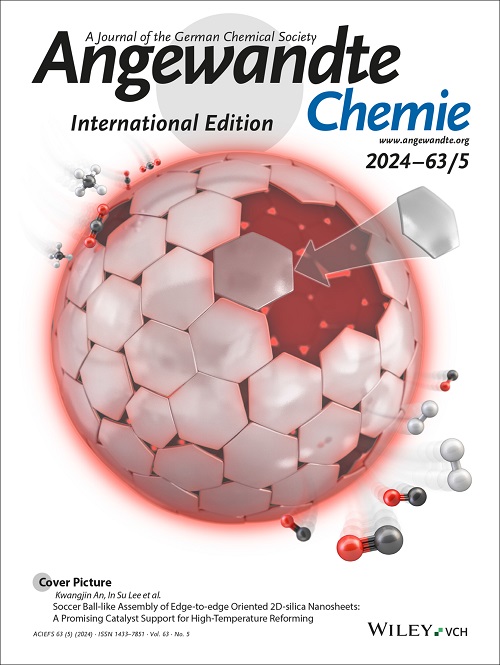IF 16.1
1区 化学
Q1 CHEMISTRY, MULTIDISCIPLINARY
引用次数: 0
摘要
α、β-不饱和羰基化合物的双羰基官能团化是一种经典而多用途的方法,只需一步即可构建复杂的分子结构。然而,其区域选择性通常受制于烯分子的电子特性,导致在 β 位引入亲核物,在 α 位引入亲电子物。在此,我们报告了一种钯催化的丙烯酰胺二羧官能化反应,通过反迈克尔型加成,实现了相对于传统方法的反向区域选择性。这种策略能在 α 位有效地加入各种(杂)炔类亲核物,在 β 位有效地加入碳亲电物,包括碘代烯烃、乙烯基碘化物和碘甲烷,从而以良好的产率制备出双卡波官能化酰胺。机理研究表明,该反应是通过亲核体的 α 加成反应形成的烷基钯中间体进行的。本文章由计算机程序翻译,如有差异,请以英文原文为准。
Reverse Regioselective Dicarbofunctionalization via anti-Michael-type Addition
Vicinal dicarbofunctionalization of α,β-unsaturated carbonyl compounds is a classical yet versatile method for constructing complex molecular architectures in a single step. However, the regioselectivity is typically governed by the electronic properties of the alkene moiety, leading to the introduction of a nucleophile at the β-position and an electrophile at the α-position. Herein, we report a palladium-catalyzed dicarbofunctionalization of acrylamides via anti-Michael-type addition, achieving reverse regioselectivity relative to traditional approaches. This strategy enables the efficient incorporation of various (hetero)arene nucleophiles at the α-position and carbon electrophiles, including iodoarenes, vinyl iodides, and iodomethane, at the β-position to furnish dicarbofunctionalized amides in good yields. Mechanistic investigations suggest that the reaction proceeds through an alkylpalladium intermediate formed via the α-addition of a nucleophile.
求助全文
通过发布文献求助,成功后即可免费获取论文全文。
去求助
来源期刊
CiteScore
26.60
自引率
6.60%
发文量
3549
审稿时长
1.5 months
期刊介绍:
Angewandte Chemie, a journal of the German Chemical Society (GDCh), maintains a leading position among scholarly journals in general chemistry with an impressive Impact Factor of 16.6 (2022 Journal Citation Reports, Clarivate, 2023). Published weekly in a reader-friendly format, it features new articles almost every day. Established in 1887, Angewandte Chemie is a prominent chemistry journal, offering a dynamic blend of Review-type articles, Highlights, Communications, and Research Articles on a weekly basis, making it unique in the field.

 求助内容:
求助内容: 应助结果提醒方式:
应助结果提醒方式:


